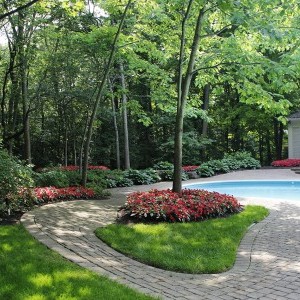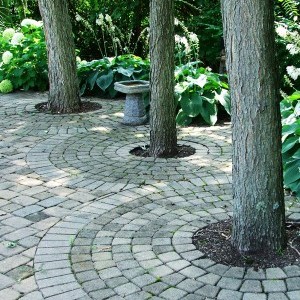Landscape Myth 2: Curves Are Easy
Here’s a common landscape myth: I can easily make a natural, pleasant look in my yard just by putting in curves.
Not always. In landscape design, you’ve got to be careful with curves. Too many and it feels too cutesy, squiggly, and busy. Too few and it feels too sterile. Curvature done well in the landscape looks easy because it’s relaxing to the eye, but there’s more science behind it than often realized.
Curves need to have a purpose.
It’s ridiculous to simply put a curve in a bedline or sidewalk ‘for interest’. It needs to be sweeping around something bigger, swirling to draw your attention to an anchor point, or echoing another irregular shape in the landscape.
Curves need to accent, not take away from the existing straight lines in the garden.
There needs to be a music-like harmony in the location of plants and lawn and hardscape. Look at it. Sometimes a curve can go the wrong way and end up in a visual clash. A concave (inward curve) where there should be convex (outward curve) can feel like a pinch. On the other hand, a convex where there should’ve been a concave can make a landscape feel too fat and heavy!
Curves need to be big enough to feel comfortable and not fussy.
A squiggle is not a flowing sweep. A jitter at the edge of the lawn is a hassle to both the eye and the lawnmower. A mound can feel gentle, sweeping, nestling, and stirring, or like a molehill, bump, and protrusion. It’s all about proportion and balance.
Curves need to relate well to each other.
Generally speaking, an S-shaped curve (whether a lawn edge, a patio border, a planting group, or the line of a walkway) should vary in the size of the inward curve and outward curves. This has a delightful effect of adding energy and movement to the space. Think of the difference between a figure 8 and the shape of a Coca-Cola bottle.
Fullmer’s loves to use curves in our landscape designs. With fifty years of experience under our belt we have learned how to use these graceful lines to complement any house structure, existing landscape and natural surroundings.

